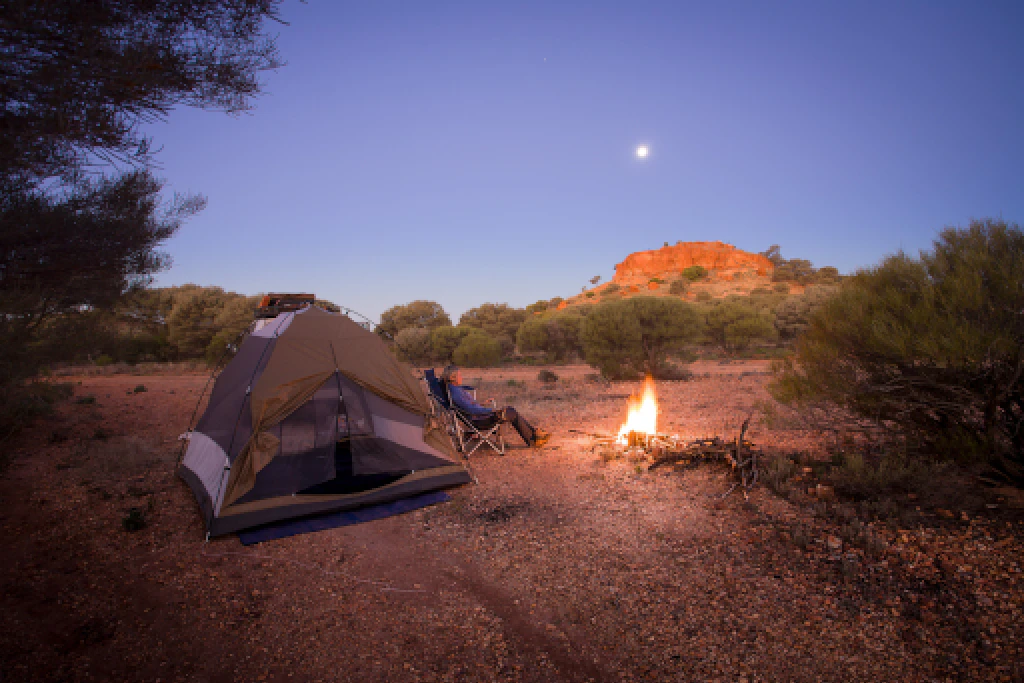
Wiluna
Located on the edge of the Little Sandy Desert, located east of Meekatharra (unsealed road) and north of Leinster (sealed road), on the Goldfields Highway, Wiluna is the gateway to two epic outback adventures for four-wheel drive enthusiasts the Canning Stock Route which runs north to Halls Creek, and the Gunbarrel Highway that runs east to Alice Springs.
The Shire of Wiluna covers an area of 184,000 square kilometres and is predominately mining, pastoral and native title land, including Indigenous Protected Areas at Matuwa (Lorna Glen Station), Kurrara-kurrara and Birriliburu.
At its peak the town was home to the biggest gold mine in Western Australia. Today, Wiluna is chiefly a Martu Indigenous community. It has an active administrative centre and offers day trips and walks to various lookouts and historic attractions.
Any history of Wiluna has two threads, European that started with Surveyor Lawrence Wells in 1892 and the infinitely longer story of the Martu people. In 1896 gold was discovered, but Wiluna did not peak until the advent of new mining technologies in the 1930’s. From a population of 600 it quickly boomed to an excess of 9,000 people.
Unfortunately, the boom times only lasted ‘til the mid 1940’s and by 1963 the town was down to 90 persons. Since that time it has increased again, mainly due to the growing number of Martu people coming in from their traditional country.
For travellers visiting Wiluna, call in at the Canning-Gunbarrel Discovery Centre, and say 'Hi', you'll be provided with a map of attractions to see around town.
Wiluna Walk Trails
The very best way to explore the heritage of Wiluna. Pick up a brochure from the Shire office, post office or shop and take a stroll around one of these new, fascinating, well sign posted and informative walks
Things to see and do in Wiluna town
- Tjurkurba Art Gallery - see the display of historic photos and unique paintings by Wiluna’s Aboriginal Martu artists who frequent the Gallery workshop, producing high quality paintings for sale.
- Canning-Gunbarrel Discovery Centre - showcasing the rich history of the area, including the 1,500 kilometre Canning Stock Route, one of the most isolated 4WD tracks on earth.
- Check out the Last of the Nomads statue, the town’s tribute to Warri (1909-1979) and Yatungka (1917-1979), believed to be the last desert nomads leading a traditional lifestyle. See Indigenous history for details.
- Take a walk around the graceful Old Hospital (now Canning-Gunbarell Discovery Centre) birthplace of many local Martu people - and former Governor-General, Major General Michael Jeffery.
- Red Hill Lookout. Just 1200 metres south of the town this rocky rise gives wonderful views over Wiluna across to the gold mine.
- Head out to the Clay Pans. After rains, these fill with water and are great for exploring, bird watching and picnics.
- View the grave sites in the Pioneer Cemetery, dated from 1893 to 1903.
Wiluna honours the Last of the Nomads
Warri (1909-1979) and Yatungka (1917-1979) were believed to be the last of the Mandildjara tribe and were perhaps Australia’s last desert nomads leading the traditional Aboriginal lifestyle. Long after the Mandildjara people (known also as Martu) had gravitated to urban settlements this couple survived for decades on their own, hunting and eating native fruits.
Warri and Yatungka met in the 1930’s and fell in love, but Indigenous tribal law forbade them from marrying. So to avoid severe physical punishment or even death, the star-crossed lovers ran away together in the middle of the night. Living in isolation, the couple had three children – only two of which survived in the harsh outback conditions.
Despite Warri and Yatungka’s defiance and departure, the Mandildjara elders constantly worried about their welfare. When a severe drought hit the region in 1977, local Aboriginal elder, Mudjon, and white explorer, Stan Gratte, set out to find “the last of the nomads”. After several weeks they were found, close to starvation in the Gibson Desert, and brought back to Wiluna. The Aboriginal elders forgave Warri and Yatungka, and they remained in Wiluna until 1979, when they passed away within weeks of each other. Their deaths marked the end of an Aboriginal lifestyle that stretched back more than 40,000 years. A statue commemorating the Last of the Nomads is located at the town’s entrance.
Wiluna accommodation
- Free temporary RV site located next to the Canning-Gunbarrel Discovery Centre (three night maximum).
- Unofficial camping at North Pool (10km North on Neds Creek Rd and then 10km west on North Pool Rd).
- Carnegie Station lies 353km east on the Gunbarrel Highway and provides self catering donga-type accommodation and fuel.
Flying to Wiluna
Skippers Aviation is Western Australia's truly regional airline, offering regular scheduled services from Perth to Wiluna.

Murchison GeoRegion Trail
Experience the Murchison GeoRegion on a road trip through a unique and ancient landscape full of stories dating back to the Earth’s beginning around 4.54 billion years ago, visiting sites of national and international, natural and cultural significance.






























